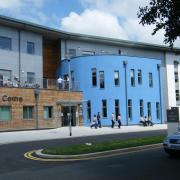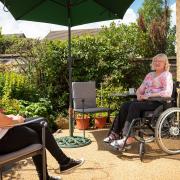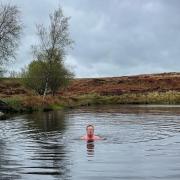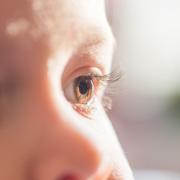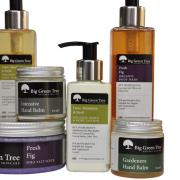In the last two decades, increasing numbers of people of all ages have started to realise that the key to a long and healthy life is to get active and exercise.The benefits exercise has to offer are considerable. However, for some people, there is sometimes a price to pay : injury related to their sporting activity.

There are two kinds of sports injuries: acute and chronic.
Acute injuries occur suddenly when playing or exercising. Sprained ankles, twisted knees, and various fractures are acute injuries.
Chronic injuries tend to happen after you exercise for a long time. these are often overuse injuries and include most painful tendon conditions, but also include stress fractures.
What’s so special about sports injuries?
Of course there are injuries that are very specific to certain sports. A good example is a small stress fracture that occurs in the lower back of fast bowlers, or certain bony abnormalities in the elbow that occur mostly in children participating in baseball.
But in general, there is nothing particularly special about sports injuries compared to those that occur outside the sporting environment. In the vast majority of cases, the damage that occurs is exactly the same and quite often, the treatment is the same. There may be circumstances where treatment may be different in high level athletes, but your surgeon or physician will apply the same principles when he or she consider what type of treatment will be most appropriate.
The ruptured Achilles tendon, that is such a common injury in badminton players, is treated in exactly the same way as the one that occurred in your neighbour, who sustained this injury when pushing your car that had failed to start on a cold morning.
The ruptured anterior cruciate ligament Michael Owen sustained has been treated in exactly the same way as the one that one of our nurses suffered when she fell awkwardly on the dance floor on a night out with friends.
The chronic patellar tendon condition that unfortunately ended Owen Hargreaves’ football career is the same injury I suffered some years ago. Luckily, in my case the outcome was a lot more positive, although the treatment will have been the same.

Is there anything people can do to prevent Sports Injuries ?
- Choose a sport that is right for you. Be realistic about your body shape, your strength and how flexible you are.
- Always warm up before you play any sport.
- Learn how to do your sport the correct way, get some lessons, especially in the more technically challenging sports such as swimming and tennis.
- Use safety gear where appropriate
- Make sure you have the appropriate equipment for your sport. the wrong racket can contribute to you developing tennis elbow. Inappropriate shoes can contribute to painful conditions such as plantar fasciitis, shin splints and other overuse tendon problems.
- If you are participating in sports that involve a lot of landing from a jump or a lot of pivoting movements such as netball and hockey, it may be worth your while seeing a physiotherapist who can teach you proper landing techniques. This will minimise the risk of serious knee injuries such as patellar dislocations and anterior cruciate ligament ruptures. This is especially important in young female athletes, who have a high incidence of serious knee injuries, often up to five times higher than their male counterparts.
- Avoid excessive hill running (both up AND down) as this tends to significantly overload the front of the knee.
- Know your limits.

- Build up your exercise tolerance levels gradually. This will make it not only less likely that you will get injured, but also make it much more enjoyable. There is not much joy in exhausting yourself in your first ever session, only to find that you have to take two weeks off to recover.
- If you have a medical condition that may interfere with certain sporting activities, talk to your family doctor, your physiotherapist or your consultant.
How Are Sports Injuries Treated?
Treatment often begins with the RICE (Rest, Ice, Compression, and Elevation) method to relieve pain, reduce swelling, and speed healing. Follow these four steps right after the injury occurs and do so for at least 48 hours:
• Rest. Reduce your regular activities. If you’ve injured your foot, ankle, or knee, take weight off of it. A crutch can help. If your right foot or ankle is injured, use the crutch on the left side. If your left foot or ankle is injured, use the crutch on the right side.
• Ice. Put an ice pack to the injured area for 20 minutes, four to eight times a day. You can use a cold pack or ice bag. You can also use a plastic bag filled with crushed ice and wrapped in a towel. Take the ice off after 20 minutes to avoid cold injury.
• Compression. Put even pressure (compression) on the injured area to help reduce swelling. You can use an elastic wrap, special boot, air cast, or splint. Ask your doctor which one is best for your injury.
• Elevation. Put the injured area on a pillow, at a level above your heart, to help reduce swelling.
Here are some other things your doctor may do to treat your sports injury.

Nonsteroidal Anti-Inflammatory Drugs (NSAIDs) Your doctor may suggest that you take a nonsteroidal anti-inflammatory drug (NSAID) such as ibuprofen, diclofenac, or naproxen sodium. These drugs reduce swelling and pain. You can buy some of these at a pharmacy or a supermarket. For others, you will need a prescription. Paracetamol is often used to relieve pain, but it does not relieve swelling.
Immobilization Immobilization is a common treatment for sports injuries. It keeps the injured area from moving and prevents more damage. Slings, splints, casts, and leg braces are used to immobilize injured limbs.
Surgery In some cases, surgery is needed to fix sports injuries. Surgery can fix torn tendons and ligaments or put broken bones back in place. Luckily, most sports injuries don’t need surgery. If you need surgery, ensure that you find a surgeon who is experienced in the area of your injury. It is often best to consult a surgeon who is recommended to you buy your doctor or physiotherapist or who is known to have treated friends or relatives with good results.
Rehabilitation (Exercise) Rehabilitation is a key part of treatment. It involves exercises that step by step get the injured area back to normal.
I cannot stress enough how important physiotherapy is in the treatment of sports injuries. Non surgical treatment almost always needs the involvement of a physiotherapist and even an operation such as an anterior cruciate ligament reconstruction will only work well if you commit yourself to a prolonged rehabilitation programme under the supervision of an experienced physiotherapist.
Don’t play your sport until you are sure you can fully use the injured area without pain, swelling, or stiffness. When you start playing again, start slowly. Build up step by step to full speed.
Rest Although it is good to start moving the injured area as soon as possible, you must also take time to rest after an injury. All injuries need time to heal; proper rest helps the process. Your doctor can guide you on the proper balance between rest and rehabilitation.
Other Therapies Other common therapies that help with the healing process include mild electrical currents (electrostimulation), cold packs (cryotherapy), heat packs (thermotherapy), sound waves (ultrasound), and massage.
Can your local hospital offer the latest treatments ?
Derby Nuffield hospital is proud to have a significant number of top surgeons and other practitioners choosing to practice at their premises. Some of them have treated or are treating top sports persons from the surrounding areas and sometimes even from far away.
You will find one or more surgeons covering all the relevant regions of the body.
The Derby Nuffield website should give you a good idea where to start and you can often link into the personal websites of the relevant specialists.
Enjoy staying fit.
Guido G Geutjens, MD, FRCS(Orth)
Consultant Knee and Sports Surgeon






